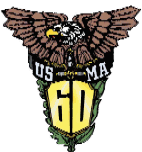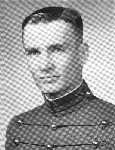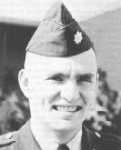

|
 
|
|
|
Frederick Garside Terry, Jr. Cullum No. 23200 Died 4 July 1968 in Vietnam Aged 31 years Interment: West Point Cemetery, West Point, New York General John Bradbury Bennet, USMA 1881
Fred was a fourth-generation West Point graduate, the son of Frederick Garside and Emelie (Bennet) Terry. The ideals that guided his life were a product of years of association with and devotion to the military and its unique way of life. Born on 3 June 1937 at West Point, Fred attended grammar school in Providence, Rhode Island, and Worcester, Massachusetts. Graduating from Culver Military Academy, Culver, Indiana, he then attended Bradens Academy in Cornwall, New York. On 3 July 1956, he entered the United States Military Academy, the culmination of a long-cherished dream, a chance to follow in the footsteps of his great-grandfather, grandfather, and father. While a cadet, he was a member of the Corps Squad hockey and lacrosse teams, the Scuba Club and the Sky-diving Club. He served as one of the principal organizers and coaches of the latter two groups. Graduated and commissioned as a second lieutenant, Armor, on 8 June 1960, Fred attended the basic course at Fort Knox, Kentucky. He then took a brief leave to marry Miss Carol Worden, his sweetheart of three years, in Pompton Plains, New Jersey, on 15 October 1960. Proceeding to Fort Benning, Georgia, he attended Ranger and Airborne Schools. At Airborne School, his classmates found it amusing to watch Fred attend to the instruction, evidently with considerable fascination…knowing that he was already a Class “D” skydiver. Carol and Fred then settled at Fort Meade, Maryland, where Fred joined Troop H, 3d Armored Cavalry Regiment. Here, he volunteered for and was accepted into the elite First Special Forces Group. Following intensive military and language training, Fred moved his family to Okinawa, where he served in various capacities with the “Green Berets.” During this period (1962-1964), Fred went to Laos (1962) and Vietnam (1963). His service in Vietnam is best summed up by this quote from his Silver Star citation: “Realizing his disadvantage and at great personal risk Captain Terry completely exposed himself to enemy fire and led the strike force in a vigorous flanking attack against the enemy positions…The result was the complete defeat of the ambush. All 194 Montagnard civilians were evacuated … the mission was a success.” Not content with only a ground view of our effort in Vietnam, Fred applied for the Army’s aviation program. Graduating from flight school in 1964 as a helicopter pilot, he joined the First Brigade of the 101st Airborne Division at Fort Campbell, Kentucky, where he, Carol, and their two children, Frederick G. Terry III (Rick) and Deborah Lynne enjoyed two short months together. With the Vietnam build-up and with the call for action still strong, Fred once again volunteered to return to South Vietnam, this time as an aviator. Assigned as an armed-helicopter platoon leader, he joined the 114th Aviation Company at Vinh Long, in the delta. During this tour, Fred’s company supported United States-Vietnamese operations in all four corps areas. For his efforts, he received four Distinguished Flying Crosses and twenty-nine Air Medals. Reunited with his family in the Spring of 1966, Fred journeyed to Fort Rucker, Alabama, where he passed on the results of his Vietnam experience to aspiring army aviators. During this period, Fred found time to attend the Infantry Career Course at Fort Benning, as well as to write numerous articles for the Infantry Journal and Infantry Magazine. Following the career course, Fred moved his family to Pompton Plains, and prepared for his third tour in Vietnam. During his sixty-day leave, he volunteered to speak to a number of high school and civic groups; local response to these appearances was gratifying. In February 1968, Fred arrived in Vietnam for his final tour, assigned to the 1st Infantry division as Executive Officer of the Air Cavalry Troop, First Squadron, 4th Cavalry. Two months later, he assumed command of the unit. During his tenure as troop commander, Fred developed and introduced many new techniques for helicopter operations. On 4 July 1968, Fred’s unit was assigned the mission of supporting the movement of an armored column. During the move, a track struck a land mine, resulting in several United States casualties. Responding to the call for help, Fred maneuvered his aircraft to evacuate the casualties. A second aircraft also responded to the appeal. A mid-air collision resulted; there were no survivors. During his last tour, Fred was awarded the Bronze Star Medal and sixteen additional Air Medals by his grateful nation. “And when our work is done,
|